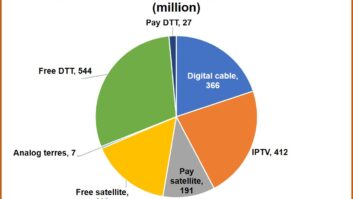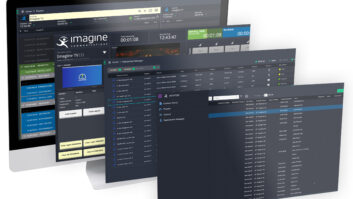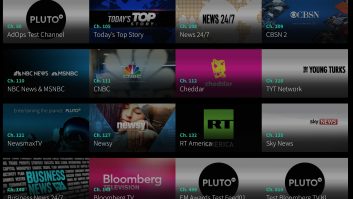
In the LinkedTV project, researchers are connecting TV content with the internet, so audiences can benefit from an more informative and personalised viewing experience.
Visitors to IBC’s Future Zone can see for themselves in a living room simulation. While watching a TV programme they can explore more information and content about concepts and topics via a companion app. The technology that makes this programme enhancement possible is targeted at broadcasters and OTT content providers.
“We will show this for two genres where further information exploration is a typical interest of viewers: a newscast by Rundfunk Berlin-Brandenburg and a documentary series of the Dutch TV station AVRO,” Lyndon Nixon, of the New Media Technology group at MODUL University Vienna, who is scientific coordinator of the project.
“We think that viewer interest is sometimes lost or frustrated because it is not possible to easily find everything we see on TV: how do I Google for the painting I just saw on the wall behind the presenter when I don’t know the name of the artwork nor the artist?”
The institute is working with eleven partners from seven countries on LinkedTV. Software scans the contents of a show prior to its broadcast via speech analysis and image processing for topic-related content from the web.
“We want to seamlessly combine TV and the internet so that viewers can directly access background information about the current programme during the show, without having to spend a lot of time and effort themselves in searching for it,” Heike Horstmann of the Fraunhofer Institute’s Intelligent Analysis and Information Systems (IAIS).
Since the software provides a great number of unfiltered hits and semantic links, the researchers have developed methods to narrow down the results according to certain criteria.
“For example, content will be displayed only if it complies with laws for the protection of minors and for which the copyright is no problem,” Horstmann added. The editorial team adds the final touches, checking suggested content for relevance and eliminating any duplication from the hit list.
Parallel to the broadcast, the viewer then finds information sorted according to topic for each chapter of a TV programme. If desired, they can specify filter criteria that determine which content is displayed – defining topics of particular interest or hiding results for specific content. The software is also capable of learning and adjusts the offer of information to the user’s behaviour.
“If the viewer repeatedly accesses the weather report or information on a particular topic, for instance, this content will be displayed in a prioritised fashion,” said Horstmann. The viewer can view both broadcast and additional content directly on the screen of a connected TV or on another device with web access, such as a tablet or laptop.
The best approach would be to use two screens that are synchronised with each other in parallel. Generally, the show then runs on the television, while further content is displayed on the second screen.







